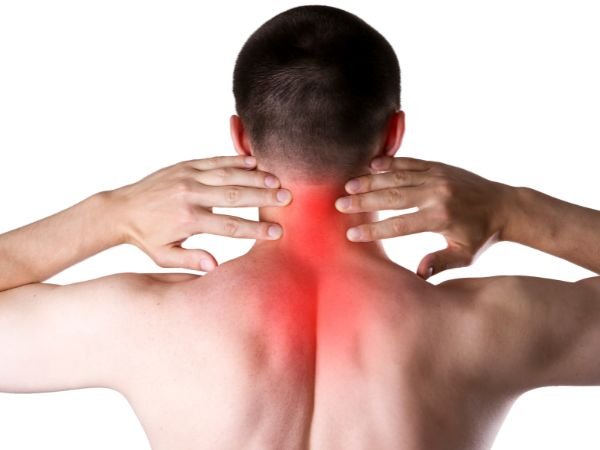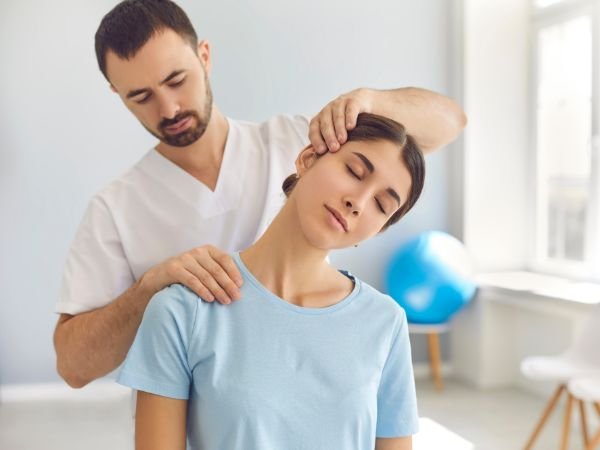Introduction

Did you know that over 30%[1] of people worldwide have suffered from neck pain and secondary headaches at one time or another in their lives? The increasing lifestyles of sedentarism, longer sitting hours at offices, and generally, poor posture increase the prevalence rates of these two conditions. Not only are these conditions painful, but they can interrupt your daily functioning and productivity to a minimum. The better news? Regularly performing exercises for neck pain and headaches can be a game-changer. In this article, we’ll dive into the top 10 exercises to alleviate neck pain and headaches, supported by scientific studies. You’ll also discover the root causes of the problem and how these exercises offer solutions. Let’s make your journey to a pain-free neck easier and more informed.
Why Neck Pain and Headaches Are So Common?

Such pains are commonly triggered by lifestyle changes of the present day, like high screen exposure and bad postures, or a lower activity rate. In this regard, based on the studies conducted in The Journal of Pain Research in 2020, prolonged sitting accompanied by forward head posture can trigger disorders in musculoskeletal structures along with chronic pain within the neck and tension headaches related to strained neck muscles.
Common Neck Pain and Headache Causes

- Poor Posture: Forward head posture puts stress on the neck.
- Muscle Imbalance: Weak neck and shoulder muscles cause tension.
- Stress: Mental stress leads to tight muscles, triggering headaches.
- Repetitive Movements: Constant tilting of the neck during work or daily activities.
- Lack of Mobility: Inadequate neck movement and stretches lead to stiffness.
Adding targeted exercises for neck pain and headaches could strengthen your neck muscles, correct postures, and reduce tension. Now, let’s explore some research-backed exercises:.
Top 10 Exercises for Neck Pain and Headaches

- Chin Tucks: This exercise is quite effective at fixing forward head posture. Chin tucks[2] significantly enhance the alignment of the cervical spine and reduce the occurrence of tension headaches.
How to do:
- Sit or stand up straight with your shoulders relaxed.
- Slowly tuck your chin in towards your chest to form a “double chin.”
- Hold for 5 seconds and then let go. Do it 10 times.
- Neck Stretch: This is a simple stretch that loosens the sides of the neck. The levels of chronic pain reduce by 25%[3] in two weeks with regular neck stretches.
How to do it:
- Sit up straight.
- Tilt your head to the right side, bringing your ear to your shoulder.
- Hold for 20 seconds. Switch sides and repeat 3 times on each side.
- Upper Trapezius Stretch: This stretch involves the upper part of the neck and shoulder region. The Spine Journal publishes[4] various research findings focusing on trapezius stretches, especially the value in removing poor posture headaches.
How to Do:
- Sit or stand straight.
- Using your right hand, gently pull your head toward your right shoulder.
- Hold for 15-20 seconds. Repeat on the left side.
- Levator Scapula Stretch: Stretches tension from the upper back and neck region. According to the British Journal of Sports Medicine, this stretch was highly effective in improving flexibility in workers with desk jobs who have stiffness.
How to do:
- Sit forward and rotate your head to 45° on the right.
- Lower your chin to the ground while facing it straight, holding for 30 seconds.
- Using your hand, deepen the stretch. Repeat 3 times on each side.
- Cat-Cow Stretch: This yoga pose is helpful in stretching the neck and spine. The cat-cow stretch[5] as an intervention to correct neck flexibility that leads to a headache due to poor spinal posture.
How to Do:
- Sit on your hands and knees, with your hands under your shoulders.
- Arch your back into a cat pose by tucking your chin in.
- Drop your belly, lift your head, and look up for the cow pose.Repeat 8 to 10 times.
- Scapular Retractions: Strengthening your shoulder muscles enhances posture. The exercises of scapular retractions[6] are basic to reduce strain in the upper back and headaches from tension.
How to Do:
- Sit up straight with your arms down at your sides.
- Pull your shoulder blades back and hold for 5 seconds.
- Release and do 10 repetitions.
- Isometric Neck Stabilization: Build strength without moving too much. Study published in 2020 revealed that isometric exercises increase muscle endurance and reduce headache frequency by 40%.[7]
How to Do:
- Push your hand against your forehead while trying to move your head forward.
- Hold for 5 seconds, then release. Repeat 5 times.
- Do the same resistance exercises on the sides and back of your head.
- Neck Rolls: Boost blood flow and loosen tightness. A study[8] published in 2019 neck rolls, showed a link with reduced tension and increased mobility within the cervical spine.
How to Do:
- Sit or stand upright.
- Slowly roll your head in a circle. Roll it clockwise for 5 repetitions.
- Switch directions and repeat.
- Thread the Needle Stretch: This is a yoga stretch that focuses on upper back tension. Yoga & Physical Therapy research shows that this exercise corrects posture and eliminates neck-related headaches.
How to do it:
- Start hands and knees
- Reach your right arm under your left arm, letting your shoulder and head drop down.
- Hold for 20 seconds and then change sides.
- Wall Angels: This postures correcting exercise strengthens the back of the thoracic cage along with the neck. Wall angels decrease forward head posture by increasing the activation of shoulder and upper back muscles.
How to Do:
- Place your back to a wall.
- Put your hands against the wall keeping them in shape “W”.
- Stretch your hands along the vertical lines to get to the position in shape “Y”. Do this 10 times.
More Tips to Succeed: Lifestyle Modifications
- Keep an ergonomic working space.
- Take breaks from looking at computer screens.
- Hydrate to avoid muscle cramps.
When to Seek Help: If pain worsens despite exercise, see a physiotherapist or a doctor. Chronic pain may be a symptom of some medical conditions: cervical spondylosis or migraines, for example.
Conclusion
Neck pain and headaches are not part of your daily schedule. Regular Exercises for Neck Pain and Headaches may reduce pain and improve posture while adding quality to your life. Take control of your neck health in the light of scientific research and practical advice. Do not wait for another moment to start with these exercises, saying goodbye to nagging neck pain and headaches.
References
We value truthful content. 8 sources were referenced during research to write this content.
- Migraine and other headache disorders. (n.d.). Migraine and other headache disorders. Retrieved from https://www.who.int/news-room/fact-sheets/detail/headache-disorders
- Stovner, L. J., Hagen, K., Linde, M., & Steiner, T. J. (2022, April 12). The global prevalence of headache: an update, with analysis of the influences of methodological factors on prevalence estimates. The Journal of Headache and Pain. Springer Science and Business Media LLC. http://doi.org/10.1186/s10194-022-01402-2
- Karlsson, L., Takala, E.-P., Gerdle, B., & Larsson, B. (2014, January 8). Evaluation of pain and function after two home exercise programs in a clinical trial on women with chronic neck pain - with special emphasises on completers and responders. BMC Musculoskeletal Disorders. Springer Science and Business Media LLC. http://doi.org/10.1186/1471-2474-15-6
- Sollmann, N., Schandelmaier, P., Weidlich, D., Stelter, J., Joseph, G. B., Börner, C., … Bonfert, M. V. (2023, July 12). Headache frequency and neck pain are associated with trapezius muscle T2 in tension-type headache among young adults. The Journal of Headache and Pain. Springer Science and Business Media LLC. http://doi.org/10.1186/s10194-023-01626-w
- Rani, M., & Kaur, J. (2022, February 9). Effectiveness of spinal mobilization and postural correction exercises in the management of cervicogenic headache: A randomized controlled trial. Physiotherapy Theory and Practice. Informa UK Limited. http://doi.org/10.1080/09593985.2022.2037032
- Nitayarak, H., & Charntaraviroj, P. (2021, November 3). Effects of scapular stabilization exercises on posture and muscle imbalances in women with upper crossed syndrome: A randomized controlled trial. Journal of Back and Musculoskeletal Rehabilitation. SAGE Publications. http://doi.org/10.3233/bmr-200088
- Hagan, K. K., Li, W., Mostofsky, E., Bertisch, S. M., Vgontzas, A., Buettner, C., & Mittleman, M. A. (2020, December 21). Prospective cohort study of routine exercise and headache outcomes among adults with episodic migraine. Headache: The Journal of Head and Face Pain. Wiley. http://doi.org/10.1111/head.14037
- Yang, S., Boudier-Revéret, M., Yi, Y. G., Hong, K. Y., & Chang, M. C. (2023, September 22). Treatment of Chronic Neck Pain in Patients with Forward Head Posture: A Systematic Narrative Review. Healthcare. MDPI AG. http://doi.org/10.3390/healthcare11192604


